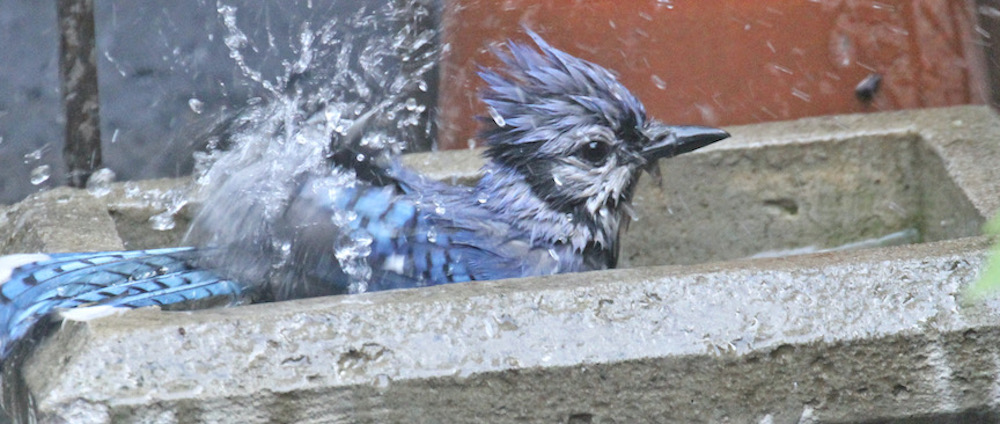This is the first year, that I have had crocuses in my rooftop garden I find them to be a sweet looking flower and that their brilliant green foliage (which is enhanced with white "pin stripes") is also awesome.
A few of my crocuses can be seen in the images posted below, and these varieties were planted this past November within the large containers where my Actinida kolomikta and Actimida AKA Kiwi Vines as well as my Continus Coggygria AKA Smoke Bush live respectively.
Some of my Crocuses Sharing Digs with my Actinida kolomikta and Actimida
|
Going Solo (View of One of my Crocuses Sharing Digs with my Continus Coggygria)
To me, the crocuses exude joy and their playful nature makes me wonder why I waited until this past November to include them in my garden. These little flowers with their pin striped foliage (although I've never heard anyone else refer to heir leaves with this particular description) have caused folks from all walks of life to be inspired to include them in their prose.
In his poem, The Year's Awakening, Thomas Hardy wrote:
How do you know, deep underground,
Hid in your bed from sight and sound,
Without a turn in temperature,
With weather life can scarce endure,
That light has won a fraction's strength,
And day put on some moments' length,
Whereof in merest rote will come,
Weeks hence, mild airs that do not numb;
O crocus root, how do you know,
How do you know?
And, like Hardy, I marvel at the presence, as well as the resilience of my sweet crocuses, and I take pictures of them as one does with a new born child; ever conscious that each moment is unique, short-lived and precious. Perhaps, dear reader, you might have surmised this from your own experience with these flowers or from images which I am including below:
When I see my crocuses closing their petals to take a nap or to protect their insides from colder temperatures, wind and heavy rain (such as they are doing in the image posted above), I sometimes think of the meaning of my surname which is Youngquist, a Swedish name, that comes from a plant that can survive under any condition.
As for me, I am a bit weary of seeing that indeed I can survive under adverse conditions, and, in my whimsical moments, I wonder if my crocuses feel the same way about being survivors. Sometimes it seems it would be nice to have a name that translated into one who survives best under cushy conditions. In any event, my crocuses seem to take life as it comes, and they appear to enjoy their moments in the sun as seen in the image below of to of them mugging for the camera.
The feelings, reactions and inspiration that crocuses can cause seem to be as varied as the crocuses themselves.
For example, Raymond Carver, has quite a different "take" on the sweet flower than Thomas Hardy seemed to have. In his poem, Two Worlds, Carver "weighs in" on on crocuses with the following:
In air heavy,
with odor of crocuses,
sensual smell of crocuses,
I watch a lemon sun disappear,
a sea change blue
to olive black.
I watch lighting leap from Asia as
sleeping.
my love stirs and breathes and
sleeps again,
part of this world and yet
part that.
|







